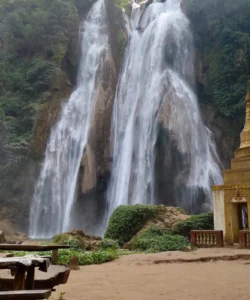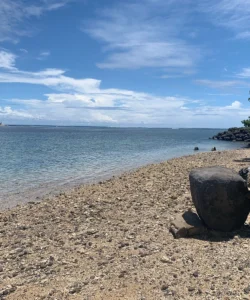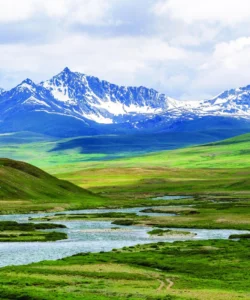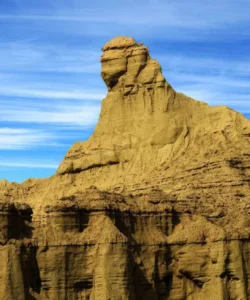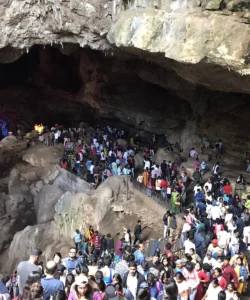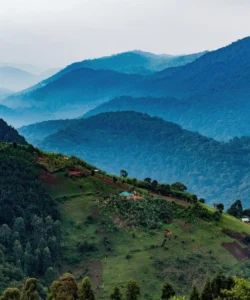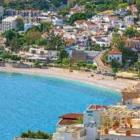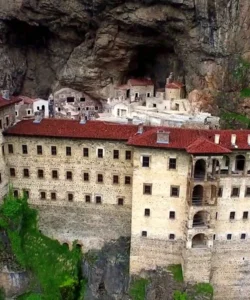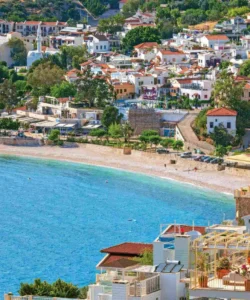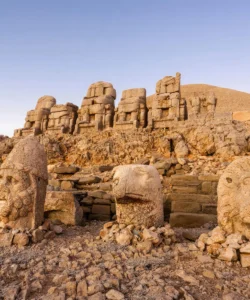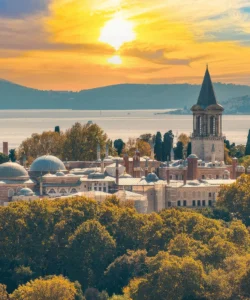Pamukkale, meaning “cotton castle” in Turkish, is a stunning natural site in Denizli Province, southwestern Turkey. It’s famous for its mineral-rich thermal waters that have created dazzling white travertine terraces cascading down a hillside. Adjacent to this natural wonder lies Hierapolis, an ancient Greco-Roman spa city. Together, Pamukkale and Hierapolis are a UNESCO World Heritage Site, drawing visitors for both their unique geological formations and rich historical significance.
Listen to an introduction about Pamukkale
Name and Address
- Name: Pamukkale (Turkish: “cotton castle”)
- Address: The site is located in Denizli Province, southwestern Turkey, near the modern town of Denizli and the town of Pamukkale itself.
How to Get There
Pamukkale is a popular tourist destination and is relatively accessible within Turkey.
- By Air: The closest airport is Denizli Çardak Airport (DNZ), about an hour’s drive from Pamukkale. You can take a taxi, shuttle, or arrange a transfer from the airport.
- By Road: Pamukkale is well-connected by intercity buses from major Turkish cities like Istanbul, Izmir, and Cappadocia. Buses arrive at the Denizli bus terminal, from where frequent minibusses (dolmuş) can take you directly to Pamukkale town.
- By Train: You can also take a train to Denizli from cities like Izmir or Selçuk (Ephesus). From Denizli train station, take a minibus to Pamukkale.
- On-Site: The site has multiple entrances. Many tours drop off at the upper gate, which is convenient for starting with Hierapolis. The lower gate is closer to Pamukkale town and offers a scenic walk up the travertines. Visitors are required to remove their shoes to walk on the white travertine terraces to protect the delicate formations.
Landscape and Architecture
Pamukkale’s landscape is a surreal blend of natural beauty and ancient ruins, showcasing millennia of geological and human history.
- Travertine Terraces: These are the most iconic feature, formed by the deposition of calcium carbonate from the hot, mineral-rich thermal springs. As the water flows down the cliffside, it cools and hardens, creating a series of shimmering white, terraced basins and petrified waterfalls that resemble a cotton castle. There are 17 hot springs with temperatures ranging from 35∘C (95∘F) to 100∘C (212∘F).
- Hierapolis Ancient City: Perched atop the travertine terraces, Hierapolis was a significant Greco-Roman spa city founded by the Attalid kings of Pergamon in the 2nd century BCE. Its ruins include:
- Roman Theater: A grand, well-preserved theater with a capacity of around 10,000 people.
- Necropolis: An extensive ancient cemetery stretching over 2 kilometers, offering a vast panorama of Greco-Roman funerary practices with various tomb types, including sarcophagi.
- Antique Pool (Cleopatra’s Pool): A thermal pool where you can swim amidst submerged Roman columns, which fell during an earthquake in the 7th century CE. Legend says Cleopatra herself swam here.
- Temple of Apollo: Located above a seismic fault, this temple was believed to be a gateway to the underworld (Pluto’s Gate), from which noxious vapors escaped.
- Martyrium of St. Philip: An octagonal early Christian monument from the 5th century, commemorating the martyrdom of St. Philip, one of Jesus’s apostles.
- Archaeological Museum of Hierapolis: Housed in the ancient Roman Bath, Gymnasium, and library structures, it displays artifacts from Hierapolis and other nearby ancient sites.
What Makes It Famous
- “Cotton Castle” Landscape: The unique, dazzling white travertine terraces are a natural wonder, visually stunning and unlike any other place on Earth.
- Thermal Healing Waters: The mineral-rich thermal springs have been renowned for their therapeutic properties for centuries, attracting visitors seeking healing and relaxation since ancient times.
- Hierapolis Ancient City: The well-preserved ruins of the ancient spa city, including its impressive theater, necropolis, and the unique Antique Pool, offer a deep dive into Greco-Roman history and culture.
- UNESCO World Heritage Site: The combined natural and cultural significance of Pamukkale and Hierapolis led to their inscription as a UNESCO World Heritage Site in 1988.
- Blend of Nature and History: It offers a rare opportunity to experience a breathtaking natural phenomenon alongside significant archaeological remains, providing a multi-layered visitor experience.
Differences from Some Other Wonders
- Natural and Man-Made Combination: Unlike purely architectural wonders (like the Temple of Artemis or the Mausoleum at Halicarnassus) or purely natural ones, Pamukkale is a unique blend where a natural geological phenomenon (the travertines) directly influenced the development and fame of an adjacent ancient city (Hierapolis).
- Active Geological Formation: The “architecture” of Pamukkale’s terraces is continuously being formed by the ongoing flow of thermal waters, making it a dynamic and evolving wonder, rather than a static historical structure.
- Therapeutic Use: While other wonders might have had religious or ceremonial functions, Pamukkale’s thermal pools were actively used for therapeutic and healing purposes for millennia, a direct and continuous human interaction with the natural site.
- Swim-Through History: The Cleopatra’s Pool offers a unique experience of swimming directly amidst ancient Roman columns that collapsed into the thermal waters, providing a tangible, immersive connection to history that is distinct from simply viewing ruins.
Pamukkale Photos:
































